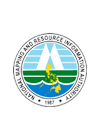What is PAGeNet?
PAGeNet is the acronym of the Philippine Active Geodetic Network, established in 2008 as part of the modernization of the Philippine Reference System 0f 1992 (PRS92) project. It is the country’s first network of permanently installed Continuously Operating Reference Stations (CORS) that gathers signals from Global Navigation Satellite System (GNSS) to provide real-time or post-processed high precision geographic position correction via the internet.
What are Active Geodetic Stations?
Active Geodetic Stations (AGS), also known as CORS, are permanent structures which gathers data from GNSS satellites 24/7 and 365 days a year. A typical AGS has GNSS receivers, GNSS Antenna, other sensors such as Meteorological and Tilt sensors and constructed on the ground or on top of stable buildings.
What are AGS or reference stations used for?
AGS provide the control needed for a wide variety of applications such as:
-
Geodetic control for surveying, engineering, mapping, cadastre etc.
- Geophysical Applications i.e. monitoring the Earth’s crust, (Earthquakes and
Volcanic Eruptions
- Monitoring natural and man-made structures (dams and bridges)
- Machine guidance for Agriculture and Construction Equipment
- Space Weather
- GIS data collection
- Three Dimensional Positioning
What types of services are provided?
PAGeNet provides real-time and post-processing positioning services. Further details about the provided services can be found on the Services and Fees web page.
How much does the service cost?
Kindly refer to Services and Fees web page. Fees are used for management and maintenance of the stations.
How do I register to the service?
Click on the Register link on the left pane of the web page: after filling out the form, you will receive in your e-mail the activation link to confirm your registration. Once your registration is confirmed, you can use the username and password to subscribe to your required service, i.e., real time correction and/or post-processing service/s.
When can I access the service?
The network services are available 24/7 all throughout the year. User assistance is available from Monday to Friday during office hours, every working days of the year, by e-mail or phone numbers listed in the Contact Us page.
What do I do if I forgot my password?
Click on the Manage Account link on the left pane of the web page. Click the Forgot password? and enter your e-mail address. Your login information will be sent to you.
How do I change my username or password?
Click on the Manage Account link on the left pane of the web page. Enter your username and password. Click on "Account Details > User Profile" (on the left pane). You can view and edit all account information including the username and password. Don’t forget to save before you close.
What is real-time positioning service?
Real-time positioning service provides correction to the position data gathered from a roving GNSS receiver via NTRIP.
What is NTRIP?
NTRIP protocol, also known as Networked Transport of RTCM via Internet Protocol, enables the mobile RTK GPS receiver (rover) to access data from the RTK base station over the internet to achieve sub-meter accuracy.
How can I access the real time service?
You must first register to PAGeNet in order to have an account and pay the one-time registration and the subscription fee. Once the subscription is activated you can now use the real time service. Kindly see RTK connection workflow in Services and Fees web page for the connection process. Manuals for different brands of receiver are also provided in References section.
What do I need to connect to the real-time network services?
You need your registered username and password, GNSS/GPS receiver that can receive differential RTCM/CMR corrections and supports authentication via NTRIP and GSM/GPRS modem (internal or separate accessory) or internet sharing through WiFi or Bluetooth for the internet connection.
What are the different RTK products available?
- Single Base – correction comes from a single AGS and user can specify which station to use for correction
- Nearest Base – PAGeNet automatically selects AGS nearest the rover to send corrections. Requires rover to transmit its position to PAGeNet server (i.e., NMEA GGA stream at rover must be enabled)
- Network RTK - corrections are sent from four or more AGS, depending on the station’s signal stability (Satellite and internet connection) *available in Mega Manila as of now
How far should the rover be from the reference AGS when conducting RTK surveys?
Single frequency receivers are recommended to be less than 10kms away from the Active Geodetic Station due to effects of the atmosphere and not more than 35kms for Dual frequency receivers.
What is NMEA GGA?
Standard text message string containing time, position and DOP information
What is the RTCM standard?
The Radio Technical Commission for Maritime Services (RTCM) is an international standards organization which oversees and formulates the standards in Radar Systems, Emergency Position, Radio Beacons as well as DGPS and RTK operations. RTCM in surveying terms, means the correction stream sent to rovers during RTK surveys.
What is post-processing service?
The post-processing service allows to obtain a precise satellite positioning by using the GNSS data acquired in the field from the GNSS receiver and the data gathered and recorded by the GNSS reference stations. The processing is done after collecting the data in the field. Raw data from the field must be converted to RINEX data format.
What is RINEX?
RINEX, also known as Receiver Independent Exchange format, is a data interchange format for raw navigation data. This allows the users to understand the data gathered from the GNSS.
How can I access the post-processing service?
You must first register to PAGeNet in order to have an account and pay the one-time registration and the subscription fee. Once the subscription is activated you can now use the post-processing service. To download RINEX data, click the Download link on the left pane of the web page and log in to your registered account.




